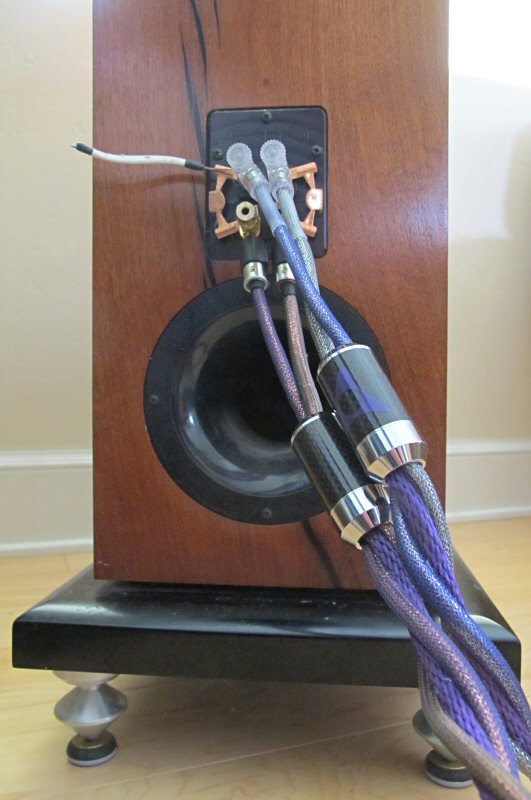Bi-wiring results is dependent on a speakers sensitivity and how low they go. Generally it is not the best idea to mix brands when bi-wiring. I bi-wired fat Monster Cable speaker cable and the Kimber Kable 4VS on my Von Schweikert VR-4 speakers, it worked but those speakers were not very revealing. Once I got my Salk HT2-TL speakers I heard what a mess the cable mix made, adding a vague non-coherent uneasiness to the sound.
My Salk HT2-TL speaker's sensitivity is 88dB with strong bass down to 34Hz. The Seas Excel W18 magnesium cone drives need current to maximize their performance. I discovered a single run of Kimber 4VS attenuated the bass. The 4VS has an aggregate wire size of 13 AWG, a double run has an aggregate wire size of 10 AWG, which is the sweet spot for the HT2-TLs. My test recording was "Temple Caves" from Mickey Hart's Planet Drum. A single run of Kimber has pretty good bass, a double run made the single pane glazed windows in my old house rattle.
If your speakers don't have strong output below 40 Hz or you use a sub with a high level connection (amp) then the wire gauge may not make any difference and 13 AWG to 15 AWG may work just fine.
My Kimber Kable 4VS have kept up with all my equipment changes. I demoed some Zenwave 14 gauge Neotech EC-UPOCC speaker cables ($$$$). They sounded great, the Zenwave are slightly clearer than the Kimber but 14 gauge cables still attenuate the bass so I kept the Kimber. The difference between the two cable was too subtle to spend the big bucks but the listening experience was educational.
Our audio club auditioned the new Hapa Torsion 14 gauge UPOCC hand polished Copper and Torsion 15 gauge UPOCC Nano-polished Silver in two different systems. Once again both Eric and I found a single run of either cable attenuated the bass. Each of us came to this same conclusion separately and while listening to the Hapa speaker cable in our own systems. Eric uses the 8 gauge speaker cable from GR Research.
The Hapa speaker cables are a lot better sounding than the Kimber but I would need a double run and have no idea what that would cost. The difference in sound between the Copper and Silver cables was not subtle either.
Read my review about Hapa Torsion speaker cable and bi-wiring using both the Torsion Copper and Silver cable in a hybrid lash up.
https://www.audiocircle.com/index.php?topic=183932.msg1944092#msg1944092Hapa Torsion Copper and Silver bi-wired, I always leave the Cardas jumpers in place

GR Research speaker cables are similar to Kimber Kable and are cheaper
https://gr-research.com/cables/New e-mail today from The Music Room:
The Most Aggressive Cable Trade-In Program EverTrade in your used cables and get up to 65% of their original retail price as trade credit—use it to upgrade to any new cable worth at least twice the original price. No hassles. No better deal. No better time.
Click here to read the TMR e-mail